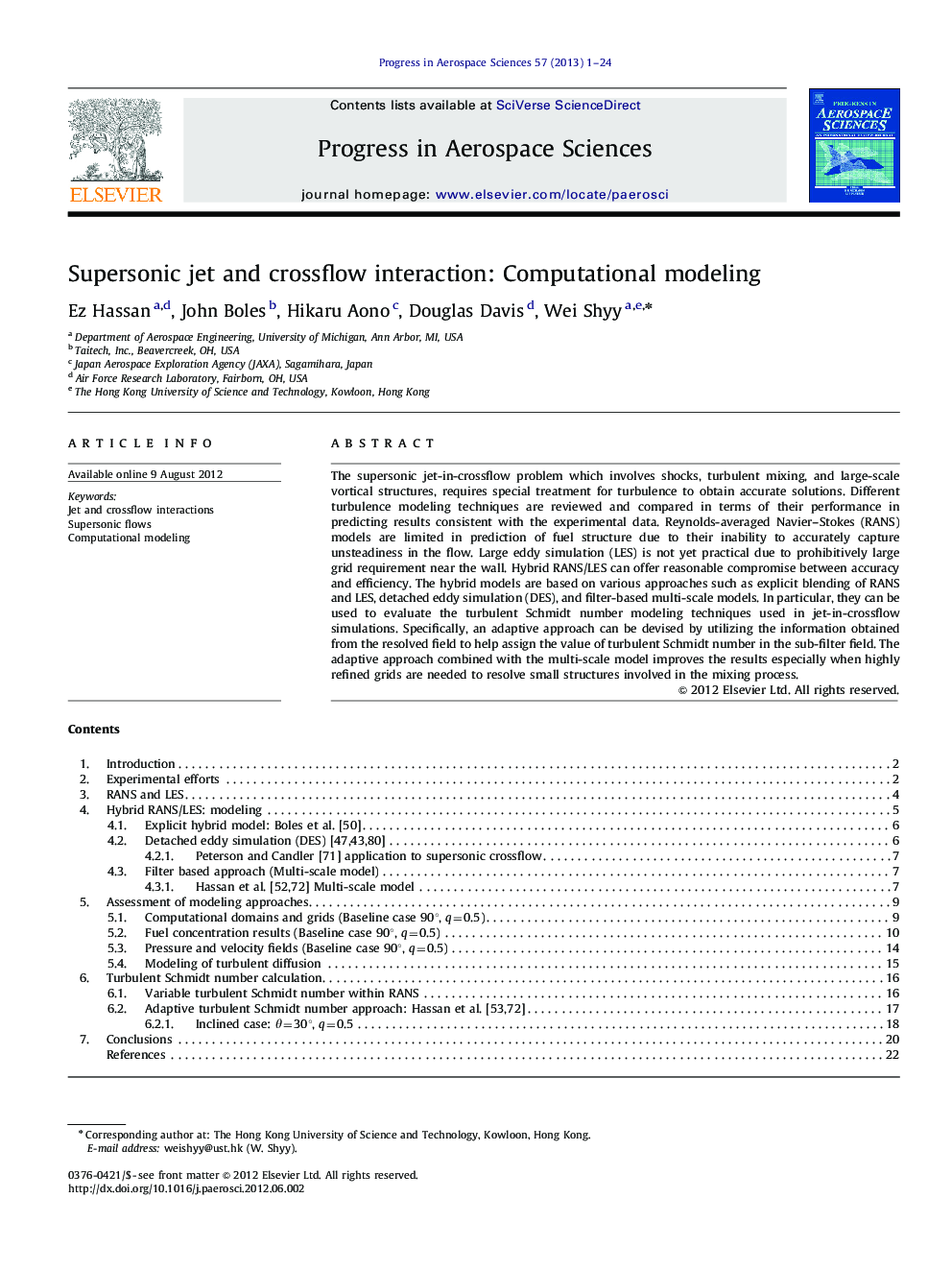| Article ID | Journal | Published Year | Pages | File Type |
|---|---|---|---|---|
| 1719309 | Progress in Aerospace Sciences | 2013 | 24 Pages |
The supersonic jet-in-crossflow problem which involves shocks, turbulent mixing, and large-scale vortical structures, requires special treatment for turbulence to obtain accurate solutions. Different turbulence modeling techniques are reviewed and compared in terms of their performance in predicting results consistent with the experimental data. Reynolds-averaged Navier–Stokes (RANS) models are limited in prediction of fuel structure due to their inability to accurately capture unsteadiness in the flow. Large eddy simulation (LES) is not yet practical due to prohibitively large grid requirement near the wall. Hybrid RANS/LES can offer reasonable compromise between accuracy and efficiency. The hybrid models are based on various approaches such as explicit blending of RANS and LES, detached eddy simulation (DES), and filter-based multi-scale models. In particular, they can be used to evaluate the turbulent Schmidt number modeling techniques used in jet-in-crossflow simulations. Specifically, an adaptive approach can be devised by utilizing the information obtained from the resolved field to help assign the value of turbulent Schmidt number in the sub-filter field. The adaptive approach combined with the multi-scale model improves the results especially when highly refined grids are needed to resolve small structures involved in the mixing process.
